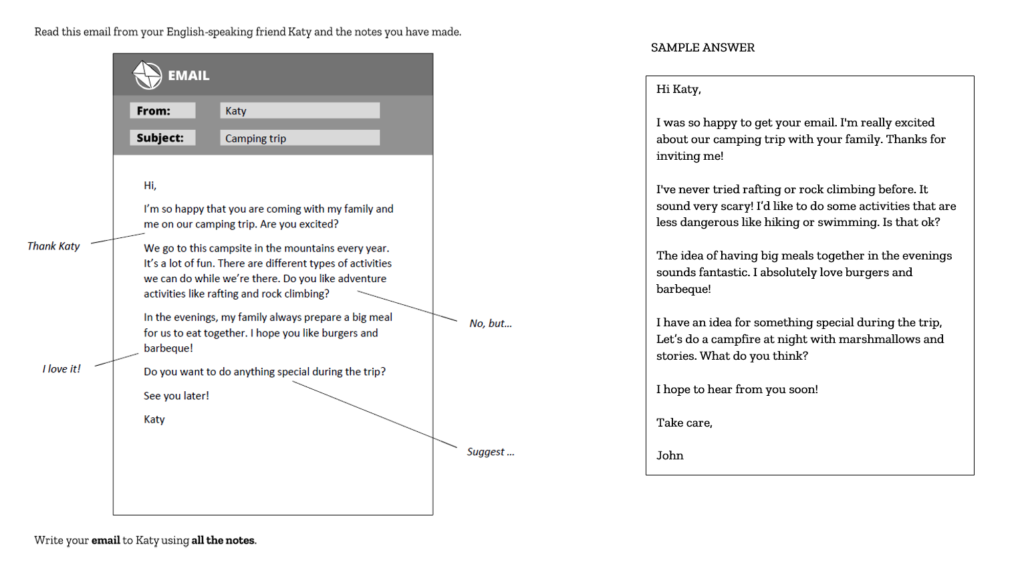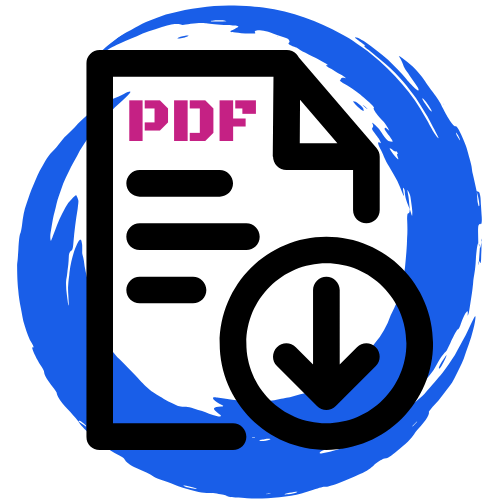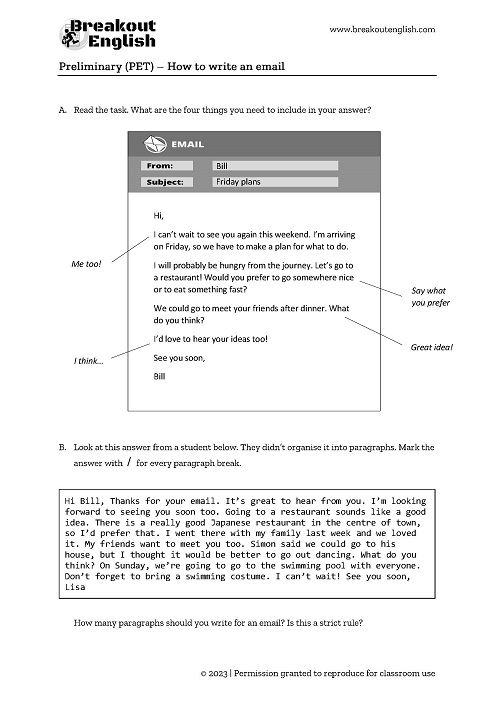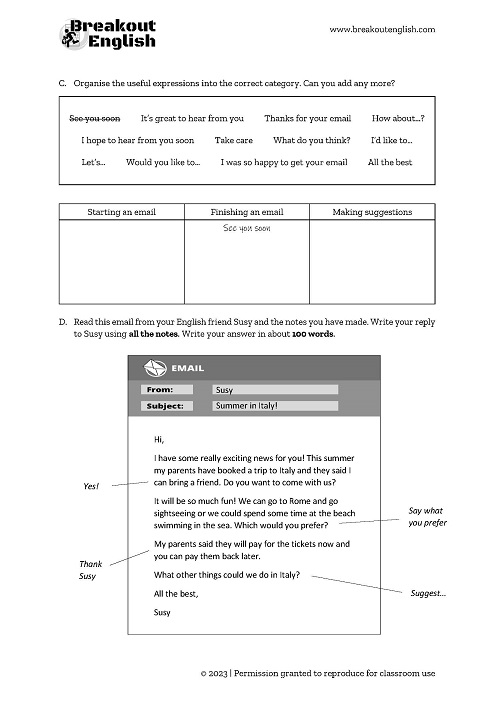Are you gearing up for the Cambridge B1 Preliminary (PET) writing part 1 and feeling a bit overwhelmed by writing an email? In the PET exam, you’re required to respond to an email from an English-speaking friend or relative in Writing Part 1. Your task is to write a coherent and engaging reply in about 100 words. The good news is that these emails typically revolve around everyday topics you’re familiar with such as travel, hobbies, or spending time with friends.

Contents
PET email structure
All successful emails follow a particular format, and B1 PET email writing is no exception. Here’s the breakdown:
- Greetings: Start by saying “hi,” “hello,” or “dear” (for a slightly more formal touch). Remember to put a comma after your greeting and then start a new line for the opening paragraph.
- Opening paragraph: React to the sender’s email, ask how they are, and briefly share relevant information.
- Main paragraph(s): Depending on the instructions, you’ll have one or more main paragraphs (probably more). Each should address specific points from the email or discuss related topics.
- Closing paragraph: Begin the farewell, express your hopes of hearing back soon, and possibly ask a question related to the topic.
- Saying goodbye: There’s no shortage of ways to sign off an informal email. Options like “best wishes,” “all the best,” “take care,” or “best wishes” work well. And don’t forget to put a comma after your sign-off and place your name on a separate line without a full stop.
You don’t need “From:” “To:” or an email subject line in the PET email. Cambridge doesn’t require them, and you’ll save thinking time for your email’s body.
One of the most important elements of your email is the organisation into paragraphs. It’s also one area that exam candidates tend to make mistakes. You must use paragraphs. With the Cambridge style email question, you have a few clear and different points to write about. Turn these into paragraphs. You might think that 100 words aren’t enough to split up, but you still have to. Cambridge wants to see that you know how to organise your text appropriately.
Here’s an example of a PET writing task and the answer, taken from our post with several PET writing sample tests. With this, you can see how the answer is appropriately structured. Download the task at the end of this post to practise structuring your email and using useful expressions.

Top 5 tips for PET email writing success
Here are my top five ways to conquer the PET email task:
- Memorise expressions: Be ready with several expressions for greetings, openings, and closings. This will save time and minimise mistakes.
- Structured email: Cambridge appreciates well-organised writing. Keep it neat and punctuated correctly. Avoid overly long sentences.
- Plan and check: Before you start, brainstorm ideas and vocabulary related to the topic. Write your email, then revise for improvements.
- Read carefully: Don’t rush in; read the task instructions thoroughly. Including irrelevant information or forgetting one of the required notes are mistakes you can easily avoid.
- Experiment at home: Be creative in your practice, but play it safe in the exam. Stick to what you know works when you’re under the pressure of an exam.
With these insights, you’re well on your way to mastering the PET email writing task. Remember, practice makes perfect, so keep improving your skills.
The materials
These materials include tasks to practise structuring an email into paragraphs. It also includes several useful expressions for PET Writing Part 1. Finally, answer the exam style task and check if you did well by comparing to the sample answer.
EXAM PART: Writing Part 1 – Email
EXAM SKILLS: Content, communicative achievement, organisation, language
TIME: 15 minutes tasks + 20 minutes writing
PREPARATION: One copy of the worksheet per student
Download




